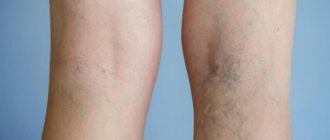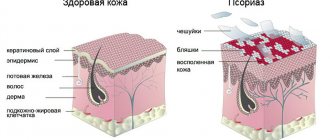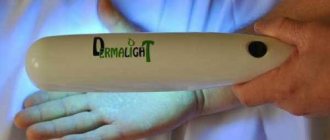What is psoriasis
Psoriasis is a chronic lesion of the skin and its appendages. The disease is characterized by periodic exacerbation and subsidence of the process. It is believed that this skin pathology is incurable. However, psoriasis is the most studied skin disease. There are several theories about the occurrence of the psoriatic process. Common to all etiological factors are manifestations of pathology. Red spots covered with white scales appear on the skin. The affected areas are accompanied by itching of varying severity. The disease most often occurs in young people with fair skin. Psoriasis affects not only the skin, but also the appendages. Psoriasis, localized in the area of the external genitalia, nails and joints, is quite rare.
Is psoriasis transmitted?
Many people are interested in whether psoriasis is transmitted from person to person. The probability of developing the disease in the presence of psoriatic process in one of the parents is 15–17%, in both parents - 41%. If a person’s parents did not suffer from psoriasis, the risk of this pathology does not exceed 4.7%. This confirms that psoriasis is inherited.
The answer to the question “Is psoriasis inherited?” is positive.
The main question that worries those around a person with this disease is “Is psoriasis contagious or not?” This pathology cannot be contracted through sexual contact, through contact with the patient’s skin, or through the use of common household items (for example, dishes, bed linen, towels, combs). Therefore, the answer to the question “Is psoriasis contagious?” - negative.
Stages of psoriasis
In its development, skin lesions go through several stages. Among them are:
- Progressive . This stage is accompanied by the active development of symptoms of the disease. New lesions appear on the skin, the size of existing elements increases, and the lesions are accompanied by severe itching.
- Stationary . During this period, the acute process subsides. The development of new lesions stops. The patient's condition is assessed as stable.
- Regressive . The condition of the skin improves significantly. In the center of the lesion, areas of healthy skin appear. Itching stops bothering the patient. The presence of psoriasis is indicated only by the remaining pigmentation in the affected area.
Depending on the severity, there are 3 stages of pathology. When less than 3% of the skin is affected, mild psoriasis develops. When 3 to 10% of the skin is affected, a moderate degree of the disease develops. When more than 10% of the surface is involved, severe psoriasis is determined. If joint damage is involved in the pathology, then this is regarded as a severe degree of psoriasis.
Psoriasis – how the disease begins in different parts of the body
Initially, rashes can appear on different parts of the body, affecting more and more skin over time. Depending on the location of the lesion, the disease begins to manifest itself differently and has a certain course.
How does psoriasis on the hands begin?
The main symptoms on the hands begin with rashes that affect the palms. They are quite voluminous, so they rise slightly above the skin. At the initial stage, small bubbles appear on the epidermis, inside of which there is liquid. Over time, they begin to turn white, at which point the bubbles burst and leave behind scars. This disorder makes the skin rough and dry, which leads to microcracks.
How does psoriasis appear on the legs? As a rule, the disease simultaneously affects the hands and feet. However, some patients develop rashes in only one area of the body. The pathological process proceeds in the same way.
How does psoriasis on the elbows begin?
Related articles:
Psoriasis on the eyes and eyelids Psoriasis on the face: photo, initial stage Psoriasis feet Psoriatic arthritis: symptoms and treatment Psoriasis in the head - treatment at home
Beginning psoriasis in the elbow area takes the form of small red plaques. The top layer of the epidermis is soft and does not rise. The rash has a uniform shade and a clear outline. At the initial stage of development, the disease occurs without pronounced symptoms. Peeling is absolutely not typical for this area.
How does psoriasis start on the scalp?
The first rashes appear on the scalp. Red or pink psoriasis plaques rise above the skin. Gradually they begin to peel off, this phenomenon is similar to a large formation of dandruff. During the pathological process, the hair remains absolutely healthy, only the upper layer of the epidermis suffers. If treatment is not started in a timely manner, the disease will only spread, affecting the ears, neck and shoulders.
How does psoriasis on the nails begin?
In all patients, the disease progresses quite differently. The first symptoms of the disease are similar to the development of a fungus, but there are certain features. As a rule, psoriasis is characterized by two features:
- thimble type (spots that resemble needle pricks form on the nail plate);
- type of onychominosis (nails thicken and acquire a yellow tint, gradually begin to peel).
It is important to start treatment in a timely manner so that the nail plate is damaged as little as possible.
Symptoms
Psoriasis has characteristic clinical symptoms, regardless of the cause. However, there are rashes with similar symptoms, which leads to situations that require differentiated diagnosis of psoriatic lesions. Depending on the type of skin rash and its location, the following types of pathology are distinguished:
- Seborrheic. This type of rash is most often localized in the scalp area. Characterized by itchy skin and severe peeling.
- Exudative. In addition to itching and peeling, it is accompanied by the appearance of papules that become crusty.
- Plantar. Localized on the soles and feet. Psoriatic rashes of this type are characterized by dry skin, the appearance of cracks and thickening.
- Teardrop-shaped. Multiple papules localized in different places.
- Onychia. A form of pathology that is located on the nails. They become deformed and change color.
Common to all types of psoriatic rashes is the presence of rash and itching. In the absence of timely treatment, the condition worsens and the lesions of psoriasis spread.
What is phototherapy? Treatment, types of phototherapy, what are its advantages, complications and side effects.
What is common plaque or vulgar psoriasis and how to treat it, see here - ordinary psoriasis.
Forecast for life with psoriasis, is it possible to die from the disease, read here - the consequences of psoriasis.
Complications
Let us note once again why psoriasis is dangerous. Complications of the disease from various organs usually develop in the following forms:
- Psoriatic arthropathy.
- Pustular psoriasis of Cymbus.
- Psoriatic erythroderma.
With arthropathy, the muscles surrounding the affected joints often atrophy and pain occurs in them. As the disease progresses, severe deformations and the formation of ankylosis (bone fusion with the development of joint immobility) are possible. Lymphadenopathy (enlarged lymph nodes) is sometimes noted. Eye damage is also possible in the form of:
- conjunctivitis (inflammation of the conjunctiva);
- uveitis (inflammation of the choroid of the eye);
- episcleritis (inflammation of the tissue located between the sclera and conjunctiva);
- phacosclerosis (hardening of the lens, loss of its elasticity).
Sometimes, against the background of arthropathy, psoriatic elements form on the mucous membranes of the bladder and urethra, which is accompanied by the development of non-infectious inflammation of these organs. The formation of papules on the mucous membrane of the gastrointestinal tract can cause the development of ulcerative-necrotic lesions of this organ system. An increase in the size of the liver (hepatomegaly) due to psoriasis is accompanied by a violation of its function, accompanied by weakness, nausea, vomiting, diarrhea, jaundice, bleeding, swelling, and in severe cases, hepatic coma develops. Hepatomegaly is often combined with splenomegaly (enlarged spleen).
Possible damage to the heart with impaired functioning of its valves, the development of myocarditis (inflammation of the heart muscle). If pathological changes affect the nervous system, polyneuritis and encephalopathy (organic brain damage) develop. The latter is accompanied by disturbances in memory, mood, consciousness, headaches, and dizziness.
With Tsimbusz psoriasis, a bacterial infection is associated, which can cause the development of sepsis (a systemic inflammatory reaction that occurs when microorganisms and their toxins penetrate the general bloodstream). The generalized pustular process, erythroderma, is characterized by dehydration, which leads to disturbances in the water-electrolyte balance in the body, severe disturbances in the functioning of the heart, liver, and kidneys.
The generalized pustular form of the disease, psoriatic erythroderma, in the absence of timely treatment, can result in the death of a person.
Against the background of frequent psycho-emotional stress associated with changes in appearance, fear of social rejection, many develop anxiety, depressive disorders, and social phobias.
Causes of psoriasis
The occurrence of psoriasis is associated with various provoking factors. Numerous studies into the causes of the disease have led to the emergence of several theories. In this regard, there are several reasons that contribute to the occurrence of psoriasis.
- Burdened heredity. If blood relatives have the disease, the risk of developing skin lesions increases. At the moment, heredity is one of the main causes of psoriasis.
- Smoking and alcohol abuse.
- Individual skin characteristics. Thin and sensitive skin is the most common cause of psoriatic lesions.
- Excessive exposure to external factors. One of the reasons for the development of skin pathology is frequent contact of the skin with chemical, alcohol, and detergent solutions.
- Immunodeficiency states. Having HIV increases the risk of developing psoriasis. The reasons for this predisposition have not been fully proven.
- Taking certain medications. These include anticonvulsants, antidepressants, and antimalarials.
- Allergy. Any allergic skin rashes are a predisposing cause of the development of psoriasis.
- Stress. Excessive nervous tension provokes the occurrence of psoriatic rashes. Stressful conditions quite often become the cause of the development of pathology, as well as its exacerbation.
Parasitic diseases
The causes of psoriasis in men and women have common predisposing factors. One of them is parasitic diseases. Harmful substances produced by the parasite have a toxic effect on the body. This provokes the development of psoriatic rashes.
Silicon deficiency in the body
Violation of silicon metabolism reliably leads to the occurrence of many diseases. This condition is one of the reasons for the development of psoriasis. An insufficient amount of silicon leads to impaired absorption of many micro- and macroelements.
Causes of development of widespread psoriasis
To date, no specific prerequisites for the development of this form of the disease have been identified. The risk group includes people who have the following health problems:
- the presence of infectious diseases, especially those caused by viruses;
- regular stressful situations and emotional shocks;
- long-term treatment with potent medications;
- excessive and chronic drinking and smoking;
- weakened immunity;
- cuts, injuries and other damage to the skin.
Genetic predisposition to the disease also plays an important role.
Classic diagnosis of psoriasis
Diagnosis of psoriatic rashes is not difficult. Psoriasis has a rather specific clinical picture. To make an accurate diagnosis, the following tests are used:
- Scraping test. This causes increased peeling of the skin.
- When skin scales are removed, blood spots form (blood dew phenomenon).
- Traumatization of the affected area leads to the appearance of new foci of psoriasis.
A general blood and urine test will determine the presence of an inflammatory process in the body. During a survey of the patient, the doctor can establish the presence of a family history, as well as determine the reasons that provoke the development of rashes.
The latest methods for diagnosing the disease
Treatment
Psoriasis therapy requires an integrated approach. For this purpose, medications are used, applied internally and topically. Therapy includes physiotherapeutic procedures, as well as diet. It is important in treatment to influence the causes that led to the occurrence of psoriasis.
Drug therapy
To combat the symptoms of skin diseases, drugs of various groups are prescribed. For this purpose use:
- Antihistamines. This group of drugs is aimed at combating itching and redness of the skin.
- Hepatoprotectors.
- Enterosorbents.
- Immunostimulating drugs.
- NSAIDs.
Local use of drugs is included in the complex therapy of psoriasis. Preference is given to non-hormonal drugs due to fewer side effects. To do this, use zinc or salicylic ointment, skin cap. All ointments are applied to the skin in a thin layer 2-3 times a day.
Diet
During the period of exacerbation of pathology, it is necessary to adhere to dietary nutrition. It is necessary to exclude spicy, fried, salty and smoked foods from the diet. It is not recommended to drink alcoholic beverages, strong coffee or tea, or artificial additives. The daily menu includes a sufficient amount of fiber, fresh vegetables and fruits, flax and pumpkin seeds, nuts, fish and lean meats. Errors in diet are one of the reasons for exacerbation of pathology.
Patients suffering from this disease and who know what psoriasis is, imagine the duration of treatment. Impact on the causes of pathology is part of the complex therapy of psoriatic rashes. The choice of therapy is made by a dermatologist. Medications require constant changes, as the skin becomes accustomed to the medications.
What causes psoriasis, what psoriasis on the hands looks like and how it begins, see here - psoriasis on the hands.
Read the first signs of psoriasis in children here - psoriasis in children.
How to treat psoriasis - an overview of all methods and methods of treating psoriasis, see here -
Treatment of psoriasis
If the doctor has identified psoriasis at the initial stage, then it is quite possible that you will be prescribed primarily preventive rather than curative medications.
For significant manifestations of the disease, the following methods of treating psoriasis are used:
- cryotherapy - a method of cold exposure;
- plasmapheresis - blood purification,
- ultraviolet therapy - treatment consists of short-term procedures similar to visiting a solarium. For greater effectiveness in the treatment of psoriasis, this method is often combined with the use of special medications (PUVA therapy).
Under no circumstances should you try to treat psoriasis with ultraviolet light yourself without the advice of a doctor. For psoriasis, small doses of ultraviolet radiation are therapeutic, but increased doses, on the contrary, can accelerate the development of the disease. The same applies to sunbathing.
Unfortunately, no one yet knows how to cure psoriasis completely, since the body “retains memory” of the disease in the form of biochemical, immunological and functional changes. Relapse of psoriasis can occur at any time, so patients with this diagnosis must be constantly monitored by a dermatologist.
Essential minerals and vitamins for psoriasis
Additional intake of vitamins and minerals during the period of exacerbation of psoriatic rashes, as well as for preventive purposes, is necessary to compensate for their deficiency in the body. Properly selected vitamins contribute to the rapid restoration of the skin and strengthen the nervous system. The following vitamins and minerals are used in the treatment of psoriasis:
| Vitamin A (retinol) | A fat-soluble vitamin that accelerates the regenerative properties of the skin. |
| B vitamins | Positively affect the nervous system. In this regard, vitamins of this group are actively used in the treatment of psoriasis. |
| Vitamin D | The lack of this vitamin negatively affects the condition of the skin and its appendages. Vitamin D is produced under the influence of ultraviolet light. Therefore, during short daylight hours, additional vitamin D intake is necessary. |
| Vitamin E | Refers to natural antioxidants. Thanks to this, it has a positive effect on the condition of the skin, accelerating its regeneration. |
| Folic acid | Due to its properties that promote skin restoration, the administration of folic acid is justified during exacerbation of psoriasis. |
| A nicotinic acid | Prescribed as symptomatic treatment to alleviate the condition during exacerbation of the disease |
Only a doctor can determine the required dosage after a preliminary blood test.
Prevention
In order to minimize the risk of psoriasis relapse, you must adhere to the following recommendations:
- Follow a dietary diet. It is necessary to limit the consumption of highly allergenic foods. These include chocolate, citrus fruits, canned food, pickles, coffee and strong tea, and alcohol. It is important to take vitamins and minerals to compensate for the lack of nutrients in the body.
- Nervous psoriasis. One of the most common causes of psoriasis relapse is stress. It is recommended to avoid such situations and learn to cope with it.
- Choose clothes by size. Tight clothing can cause additional friction in areas of psoriatic rashes. You should give preference to loose clothing made from natural fabrics.
- To live an active lifestyle. An established rest regime and adequate physical activity will strengthen the body's protective functions.
- Choose the right skin care. Skin prone to psoriatic rashes requires careful and constant care. It is recommended to choose creams from pharmacies, paying special attention to their composition.
The above recommendations will help reduce the risk of exacerbation of psoriasis. If the first symptoms of the disease appear, you must consult a doctor to select the correct therapy.
Psoriasis is a chronic disease, the course of which alternates between periods of exacerbation and remission. At the moment, doctors do not identify specific causes of the pathology. By following medical recommendations for treatment, as well as adhering to the rules of prevention, you can minimize the risk of exacerbation.











